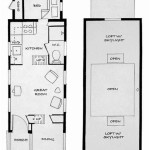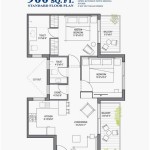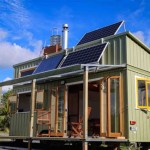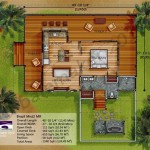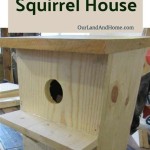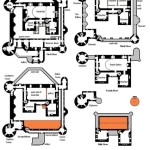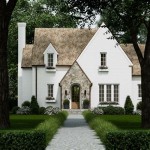Contemporary Tiny House Plans are modern blueprints designed for constructing small, energy-efficient, and portable homes. These plans encompass innovative design elements and sustainable features, enabling individuals to downsize their living spaces while maintaining comfort and functionality.
As the world grapples with housing affordability and environmental concerns, tiny house plans offer a viable solution. For instance, the “Zenith” plan by Tumbleweed Tiny House Company boasts a compact footprint of 200 square feet, featuring an open floor plan, loft bedroom, and energy-saving appliances, making it ideal for eco-conscious and minimalist living.
In this article, we delve into the realm of contemporary tiny house plans, exploring their unique features, benefits, and considerations. We will showcase a variety of plan options, discuss the latest trends and technological advancements, and provide valuable insights for those interested in embracing the tiny house lifestyle.
Contemporary tiny house plans prioritize functionality, sustainability, and modern aesthetics.
- Compact footprints
- Energy-efficient designs
- Innovative storage solutions
- Loft bedrooms
- Multi-purpose spaces
- Sustainable materials
- Smart home features
- Customizable options
These plans offer a viable solution for eco-conscious living, downsizing, and affordability.
Compact footprints
Contemporary tiny house plans prioritize compact footprints to maximize space utilization and minimize environmental impact. These plans typically range from 100 to 400 square feet, allowing for comfortable living in a smaller space. The compact size reduces energy consumption, building materials, and land requirements, contributing to sustainability and affordability.
Tiny house plans with compact footprints often incorporate clever design strategies to create the illusion of spaciousness. Open floor plans, high ceilings, and large windows help to make the interior feel more expansive. Loft bedrooms, built-in storage, and multi-purpose furniture further optimize space, allowing for all the essential amenities in a compact footprint.
Furthermore, compact footprints make tiny houses easier to transport and maneuver. They can be towed behind a vehicle or placed on a trailer, providing flexibility for those who desire a mobile lifestyle. The ability to move the house easily also opens up opportunities for downsizing, seasonal living, and exploring different locations.
However, it’s important to note that compact footprints require careful planning and efficient use of space. Tiny house plans must be meticulously designed to ensure that all essential functions are accommodated without compromising comfort or functionality.
Energy-efficient designs
Contemporary tiny house plans prioritize energy efficiency to reduce environmental impact and lower utility costs. These plans incorporate sustainable design strategies and innovative technologies to minimize energy consumption and maximize comfort.
- Insulation and air sealing
Tiny house plans emphasize proper insulation and air sealing to prevent heat loss and air infiltration. Walls, roofs, and floors are insulated with high-performance materials, such as spray foam or cellulose insulation, to maintain a comfortable interior temperature year-round. Air sealing measures, such as weatherstripping around windows and doors, help to prevent drafts and further improve energy efficiency.
- Energy-efficient appliances and fixtures
Tiny house plans specify energy-efficient appliances and fixtures to reduce energy consumption. LED lighting, low-flow faucets and toilets, and ENERGY STAR-rated appliances are commonly incorporated to minimize electricity and water usage. Some plans may also include solar panels or other renewable energy systems to generate electricity and further reduce reliance on fossil fuels.
- Passive solar design
Many contemporary tiny house plans utilize passive solar design principles to harness natural sunlight for heating and lighting. Large windows and skylights are strategically placed to allow sunlight to enter during the day, while overhangs and shading devices prevent excessive heat gain during the summer months. This approach reduces the need for artificial heating and cooling, resulting in lower energy bills and a more comfortable living environment.
- Cross-ventilation
Tiny house plans often incorporate cross-ventilation strategies to promote natural airflow and reduce the need for air conditioning. Windows and vents are placed on opposite sides of the house to create a cross breeze, which helps to circulate fresh air and regulate interior temperature. This passive cooling technique can significantly reduce energy consumption, especially in warmer climates.
By implementing these energy-efficient designs, contemporary tiny house plans offer sustainable and cost-effective living solutions with minimal environmental impact.
Innovative storage solutions
Contemporary tiny house plans incorporate innovative storage solutions to maximize space utilization and maintain a clutter-free environment. These plans employ clever design strategies and multi-purpose furniture to create ample storage capacity without compromising comfort or aesthetics.
Built-in storage
Built-in storage is a key feature of contemporary tiny house plans. Cabinets, drawers, and shelves are seamlessly integrated into the walls, stairs, and other structural elements of the house. This approach creates hidden storage spaces that are both practical and aesthetically pleasing. Built-in storage can be customized to accommodate specific storage needs, such as clothing, kitchenware, or books.
Multi-purpose furniture
Multi-purpose furniture is another clever storage solution employed in tiny house plans. Ottomans with built-in storage, beds with drawers, and tables with hidden compartments provide additional storage capacity without taking up extra space. This type of furniture allows for efficient organization and eliminates the need for separate storage units.
Vertical storage
Vertical storage is essential for maximizing space in tiny houses. Wall-mounted shelves, hanging organizers, and stackable bins make use of vertical space to store items that would otherwise clutter the floor or countertops. Vertical storage solutions also improve accessibility, as items are stored at eye level or within easy reach.
Hidden storage
Hidden storage is a great way to keep clutter out of sight and maintain a clean and organized living space. Tiny house plans often incorporate hidden storage compartments under beds, behind mirrors, or within walls. These hidden spaces can be used to store seasonal items, bulky items, or anything that needs to be kept out of the way.
By implementing these innovative storage solutions, contemporary tiny house plans create functional and comfortable living spaces that maximize space utilization and minimize clutter.
Loft bedrooms
Loft bedrooms are a common feature in contemporary tiny house plans, offering a space-saving solution to create a separate sleeping area without sacrificing valuable floor space. These elevated bedrooms are typically accessed by a ladder or stairs and provide several advantages.
- Increased privacy
Loft bedrooms create a more private sleeping space, separated from the main living area. This is especially beneficial for tiny houses with multiple occupants, as it allows for individual privacy and reduces distractions during sleep.
- Maximized floor space
By elevating the sleeping area, loft bedrooms free up valuable floor space on the main level. This allows for more spacious living areas, kitchens, and bathrooms, making the tiny house feel more comfortable and less cluttered.
- Improved air circulation
Loft bedrooms often have better air circulation than bedrooms on the main level. Warm air rises, so the sleeping area in a loft bedroom tends to be cooler and more comfortable, especially during hot summer months.
- Unique and cozy atmosphere
Loft bedrooms can create a unique and cozy atmosphere. The elevated sleeping space offers a sense of seclusion and can be decorated to create a private sanctuary.
Loft bedrooms are a versatile and space-saving solution for contemporary tiny house plans. They offer increased privacy, maximize floor space, improve air circulation, and create a unique and cozy sleeping environment.
Multi-purpose spaces
Contemporary tiny house plans often incorporate multi-purpose spaces to maximize functionality and space utilization. These spaces can serve multiple functions, allowing for a more flexible and adaptable living environment.
- Living/dining/kitchen area
In many tiny house plans, the living room, dining room, and kitchen are combined into one multi-purpose space. This open floor plan creates a more spacious and inviting atmosphere, while also reducing the need for separate rooms. The area can be easily reconfigured to accommodate different activities, such as cooking, dining, entertaining, or relaxing.
- Bedroom/office
Some tiny house plans feature a bedroom that can also be used as an office or study space. This multi-purpose room allows for efficient use of space, especially for those who work from home or need a dedicated workspace. The room can be furnished with a bed, desk, and other necessary furniture to create a functional and comfortable environment for both sleeping and working.
- Loft/storage
Loft spaces in tiny houses can serve multiple purposes. In addition to providing sleeping quarters, lofts can also be used for storage or as a play area for children. This vertical space utilization maximizes the functionality of the tiny house and allows for more open and spacious living areas.
- Outdoor living space
Many contemporary tiny house plans incorporate outdoor living spaces, such as decks or patios, into their designs. These spaces extend the living area outdoors and provide a place to relax, entertain, or simply enjoy the fresh air. Outdoor living spaces can be furnished with comfortable seating, a fire pit, or even a small garden, creating a seamless connection between indoor and outdoor living.
Multi-purpose spaces are a key feature of contemporary tiny house plans, allowing for flexible and adaptable living solutions that maximize space utilization and functionality.
Sustainable materials
Contemporary tiny house plans prioritize the use of sustainable materials to minimize environmental impact and promote a healthy living environment.
- Recycled and reclaimed materials
Many tiny house plans incorporate recycled and reclaimed materials to reduce waste and conserve natural resources. Recycled materials, such as steel, aluminum, and wood, can be used for framing, siding, and roofing. Reclaimed materials, such as barn wood and vintage fixtures, add character and a unique aesthetic to the tiny house.
- Sustainably harvested wood
Wood is a common material used in tiny house construction, and contemporary plans emphasize the use of sustainably harvested wood. This means that the wood is sourced from forests that are managed according to strict environmental standards, ensuring the long-term health of the forest ecosystem.
- Low-VOC materials
Volatile organic compounds (VOCs) are chemicals that can be emitted from building materials and can have negative health effects. Contemporary tiny house plans specify low-VOC materials, such as paints, adhesives, and sealants, to create a healthy indoor environment and reduce the risk of respiratory issues.
- Energy-efficient windows and doors
Windows and doors can be a significant source of energy loss in a tiny house. Contemporary plans incorporate energy-efficient windows and doors that are designed to minimize heat transfer and reduce energy consumption. These windows and doors typically feature double or triple glazing, low-e coatings, and weatherstripping to improve insulation.
By using sustainable materials, contemporary tiny house plans promote environmental responsibility, reduce waste, and create healthy and comfortable living spaces.
Smart home features
Contemporary tiny house plans embrace smart home features to enhance convenience, energy efficiency, and security. These features allow homeowners to control and monitor their tiny houses remotely, automate tasks, and create a more comfortable and sustainable living environment.
- Remote control and monitoring
Smart home features enable homeowners to control and monitor their tiny houses remotely using a smartphone or tablet. This allows them to adjust lighting, temperature, and security settings from anywhere, providing peace of mind and added convenience.
- Automated tasks
Smart home features can automate various tasks to save time and energy. For example, automated lighting systems can turn lights on and off based on a schedule or motion detection, while smart thermostats can adjust the temperature based on occupancy and preferences.
- Energy efficiency
Smart home features can contribute to energy efficiency by optimizing energy consumption. Smart thermostats can learn homeowners’ heating and cooling patterns and adjust the temperature accordingly, reducing energy waste. Smart lighting systems can also reduce energy consumption by automatically turning off lights when they are not needed.
- Security and safety
Smart home features enhance security and safety in tiny houses. Smart locks allow homeowners to lock and unlock their doors remotely and receive notifications if there is unauthorized access. Security cameras and motion sensors can also be integrated into smart home systems to provide real-time monitoring and deter potential intruders.
Smart home features offer numerous benefits for contemporary tiny house plans, including convenience, energy efficiency, and enhanced security. By incorporating these features, tiny house owners can create a more comfortable, sustainable, and technologically advanced living space.
Customizable options
Contemporary tiny house plans offer a wide range of customizable options to suit individual preferences, lifestyles, and budgets. These options allow homeowners to create a tiny house that is uniquely their own, tailored to their specific needs and aspirations.
Layout and design
One of the key customizable options in contemporary tiny house plans is the layout and design. Homeowners can choose from a variety of floor plans and configurations to create a space that flows seamlessly and meets their functional requirements. They can opt for open floor plans that maximize space and create a sense of spaciousness, or choose more traditional layouts with separate rooms for privacy and organization.
Exterior and interior finishes
Customizable options also extend to the exterior and interior finishes of the tiny house. Homeowners can select from a range of siding materials, such as wood, metal, or composite materials, to create a unique exterior aesthetic. They can also choose from a variety of interior finishes, including flooring, wall coverings, and cabinetry, to create a space that reflects their personal style and taste.
Appliances and fixtures
Contemporary tiny house plans allow for customization of appliances and fixtures to suit specific needs and preferences. Homeowners can choose from a range of energy-efficient appliances, such as refrigerators, stoves, and dishwashers, to create a functional and sustainable kitchen. They can also select from a variety of fixtures, such as lighting, plumbing fixtures, and hardware, to create a cohesive and stylish interior design.
Additional features
In addition to the core customizable options, contemporary tiny house plans often offer a range of additional features to enhance comfort, convenience, and functionality. These features may include loft spaces for additional sleeping or storage, outdoor living areas such as decks or patios, and smart home features for remote control and automation. By selecting the right combination of customizable options and additional features, homeowners can create a tiny house that is tailored to their unique lifestyle and needs.
The extensive customizable options available in contemporary tiny house plans empower homeowners to design and build a space that truly reflects their individuality and aspirations. These options allow for the creation of tiny houses that are not only functional and sustainable but also unique and inspiring.










Related Posts

